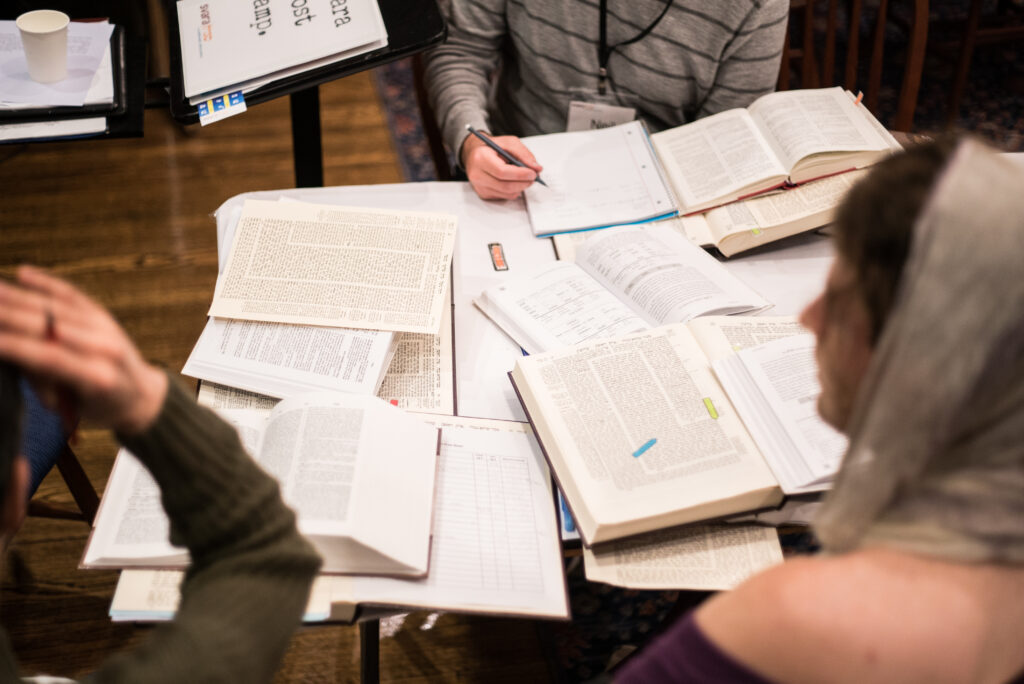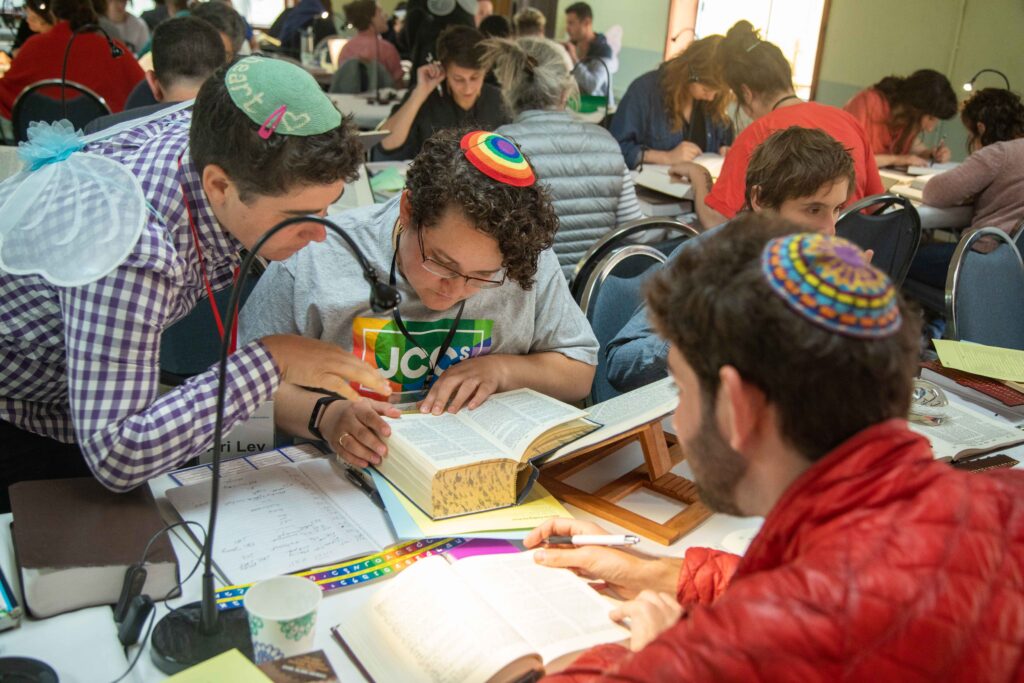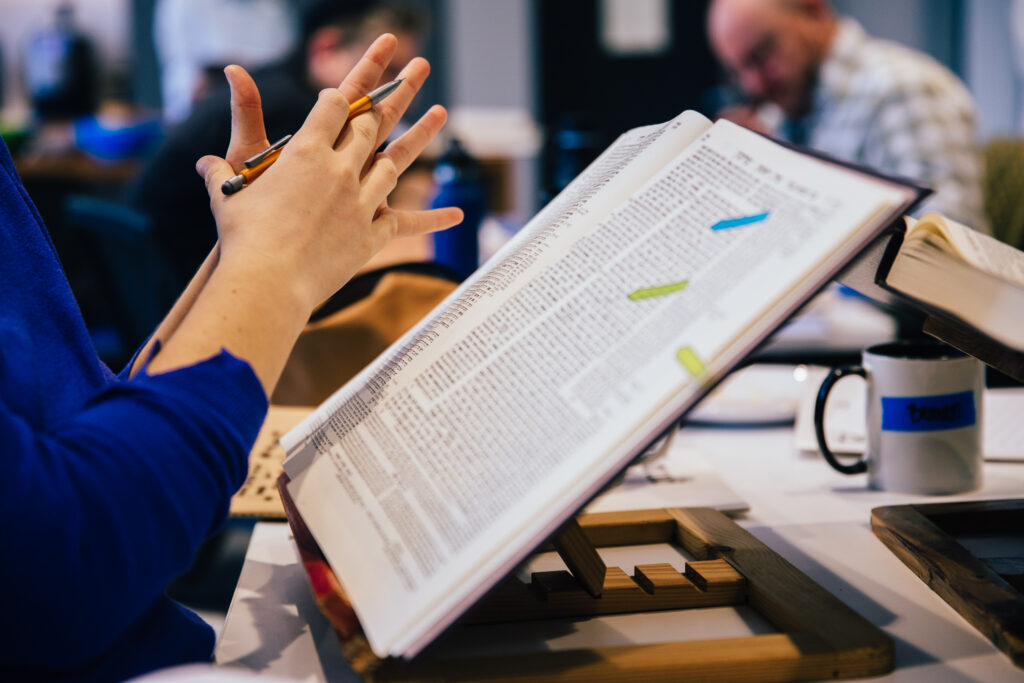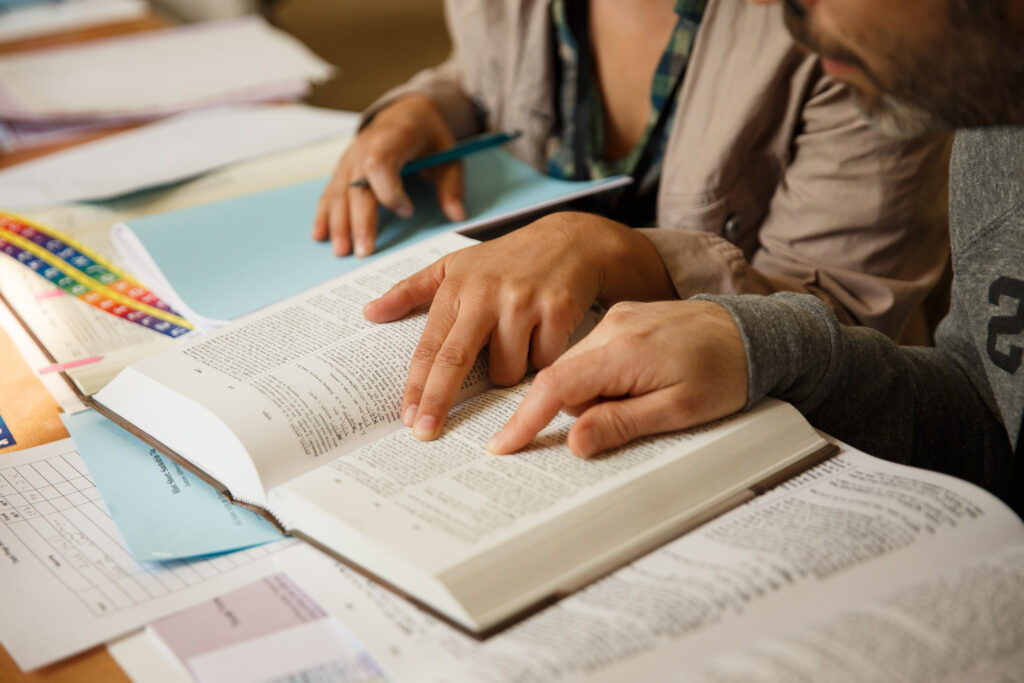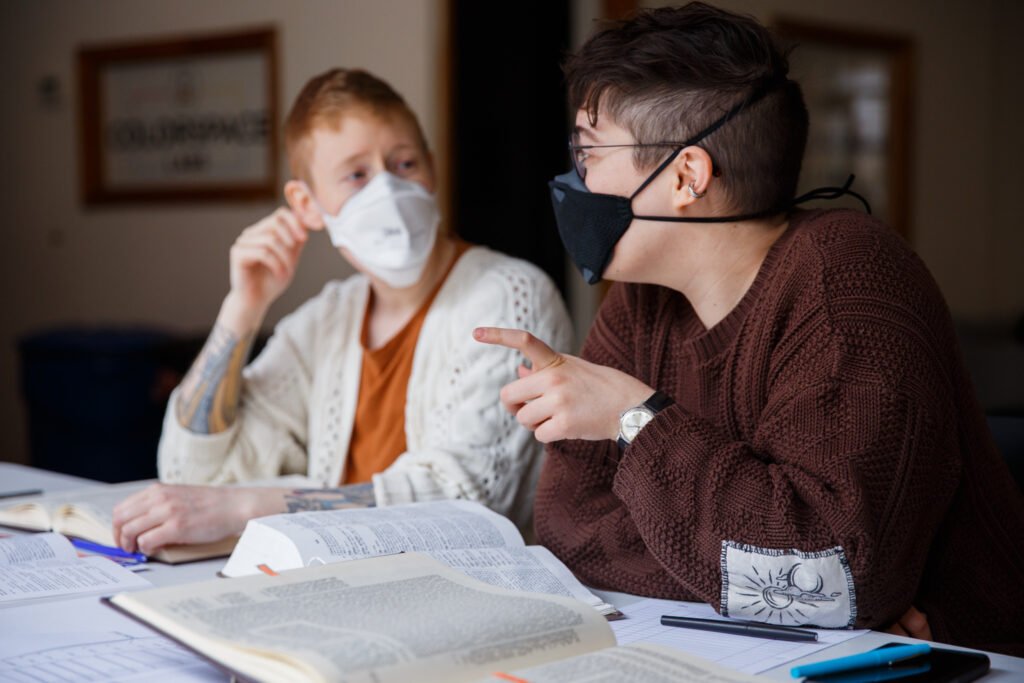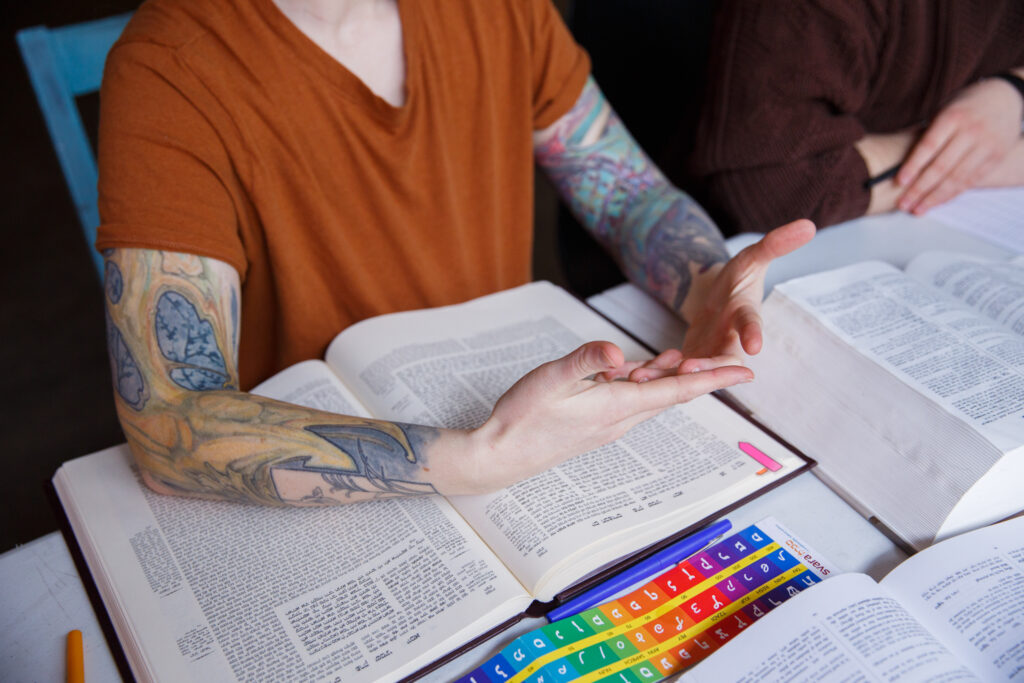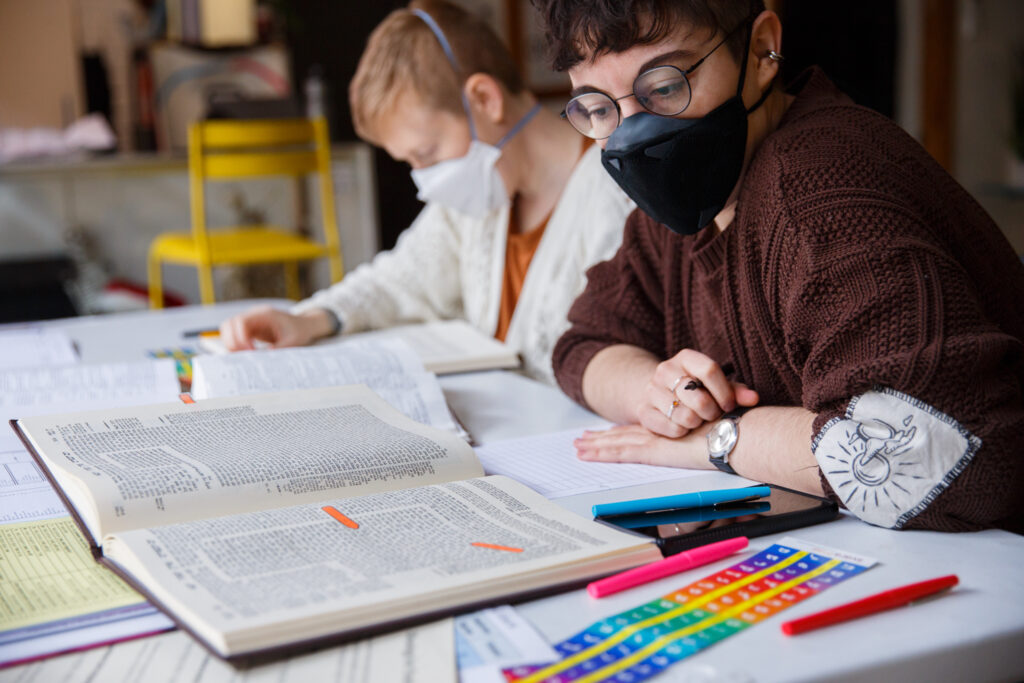With gratitude to my chevruta-rav, R’ Benay, for our learning and continued exploration of this idea!
The past 180 days have been characterized by so many things for klal yisrael—the collective of the Jewish people: fear, grief, worry, violence, heartbreak, anger, beautiful organizing, connection, despair. Opposite sensations, emotions, perspectives, experiences, and truths are simultaneously present in any corner of the global Jewish landscape, sometimes even within a single human being at once. And while not all positions are good, all experiences are true. (Though as I write this, I worry that you’ll think I’m falsely equivocating. I hope you’ll trust I am not, and that, if not, we can talk about it.)
One of the things I first instinctively loved about learning Talmud is its capacity to seemingly “hold it all.” I appreciate the ways in which inheriting a multi-millennia-old tradition means that there’s most likely someone at some point in our tradition’s history who felt whatever it is I’m feeling. As Ben Bag Bag famously said, הֲפֹךְ בָּהּ וַהֲפֹךְ בָּהּ, דְּכֹלָּא בָהּ, “turn it, for everything is in it.” If you keep turning Torah—or yourself—you’ll find an echo of what you’re feeling somewhere.
I’ve learned so much from R’ Benay, and from all of you, about the power of Talmud’s capacity both to hold so much and to help us grow into the kinds of people who can do that, too. Every daf testifies to this: when we learn that there are 70 faces of Torah—all equally true and equally revealed at Sinai, when we are taught that two opposing statements are divrei elohim chayim—words of the living G!d—and even in the more constant moments of each sugya, where machloket, disagreement, is the primary mechanism for moving discourse forward.
The capacity to simultaneously understand and appreciate multiple truths and to not only accept but to uplift dispute and difference is possibly one of the most sacred endeavors of the rabbinic project that they model for us in countless moments and texts; to flex the muscle of holding multiplicity and multivocality is deeply Jewish.
Maybe the Talmud can hold it all, but I can’t.
This fall I spoke to so many of you who were struggling with questions of who your people are, feeling deep ruptures of trust that reverberated throughout your relationships and communities. “If someone can’t say X,” I heard, “they’re not my people.” “Unless I know that they believe Y, I can’t show up.” For many of us, our previous capacity to show up to various forms of pluralism had vanished, and I don’t know if and how it might return. What is it about moments like this that activates our instincts to create firm boundaries?
We’ve been learning a famous sugya often referred to by its refrain: מִפְּנֵי דַּרְכֵי שָׁלוֹם, mipnei darchei shalom, which we’ve translated in many ways (of course), but most consistently for the sake of the ways of peace. It begins:
אֵלּוּ דְּבָרִים אָמְרוּ מִפְּנֵי דַּרְכֵי שָׁלוֹם
These are the things that they said mipnei darchei shalom
The Mishnah then goes on to list examples of practices that emerged to create order in seemingly everyday moments: setting an order for who gets called to the Torah, creating guidelines for which cistern is filled first next to a river, ensuring that we handle lost and found objects justly, not taking objects that aren’t technically someone else’s but have already been spoken for, among others. As each case is named, it is followed by the refrain ‘mipnei darchei shalom,’ reminding us each time that this particular practice came into being in order to foster ways of peace and wholeness. (In shiur we’ve taken to referring to these practices as rules that emerged for the sake of “don’t be a butthead.”)
Rashi, commenting on one of the cases, explains that it emerged “so that there would not be machloket between the people.” In other words, the people created these practices not related to any mitzvah in particular, but as a set of behaviors and norms to enable them to be together without conflict erupting in the community.
I was struck by Rashi’s claim: how can it be that in our tradition, which is so deeply driven by machloket, we would create practices that attempt to remove machlokot between us? Part of being together in the midst of machloket is what makes Jews Jewish! What is it about these practices that demand regulation? More expansively, what makes some disputes unlivable in a community?
This framework offered me vocabulary from within halakha for the instincts that I’ve been sifting through over these months. I hear in this text a reminder that there is, of course, a limit to machloket, and it is not capricious: it emerges when we need to act together, when we depend on each other, and when shalom is at stake. This mishnah offers me an invitation and a reminder that we can recognize these limits in our relationships and communities, and that these boundaries are formed out of shalom and for the sake of shalom—these boundaries, too, are peace.
Rabbinic pluralism and multivocality are part of the beautiful queer, subversive legacy that the tradition has bequeathed to us. But so are its boundaries, its recognition that while there can be 70 faces of Torah, we can’t practice them all together, simultaneously.
May we discern together what we need to ask of ourselves and each other mipnei darchei shalom.

